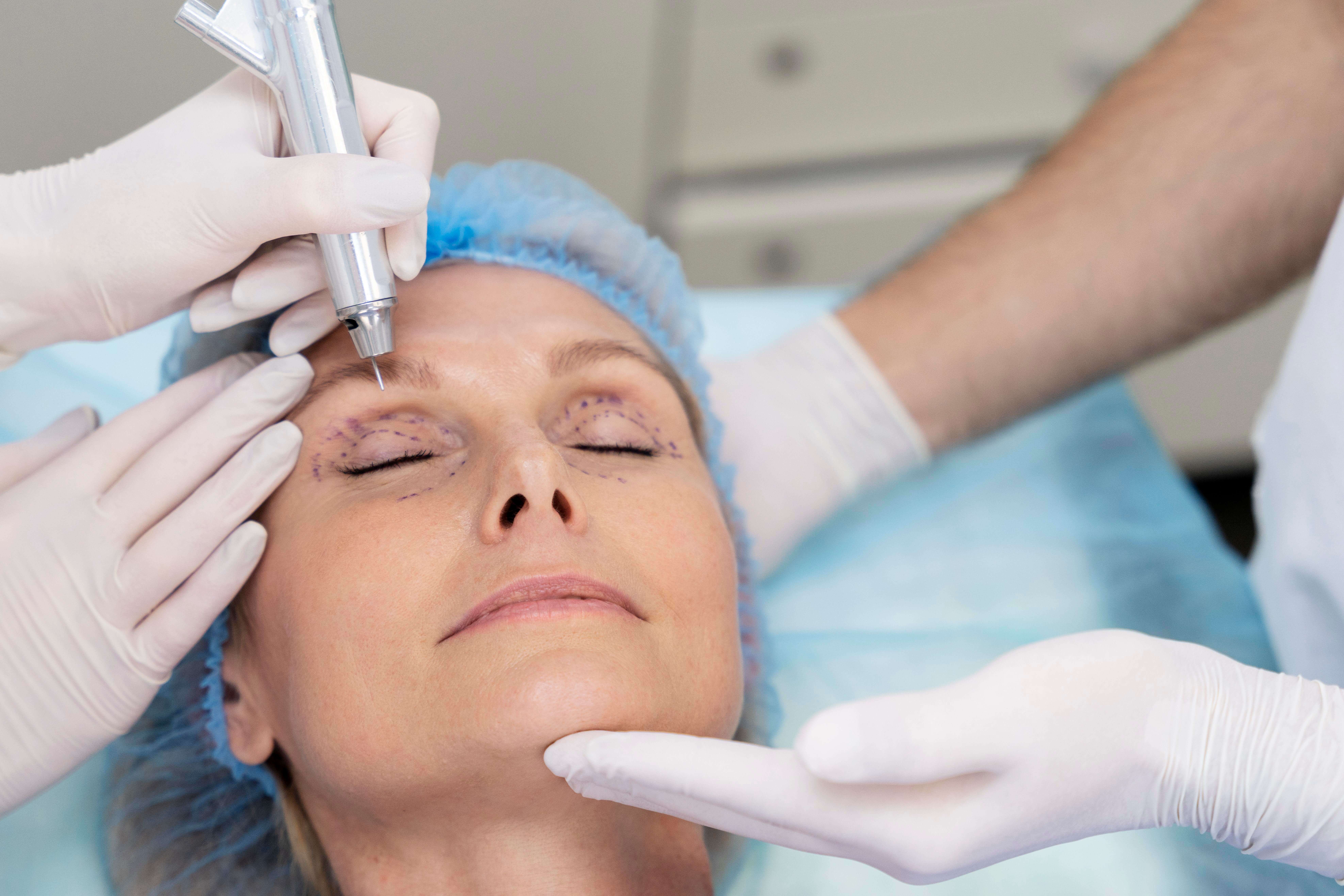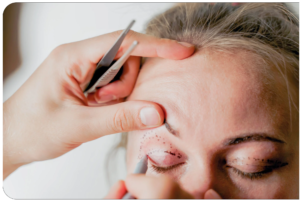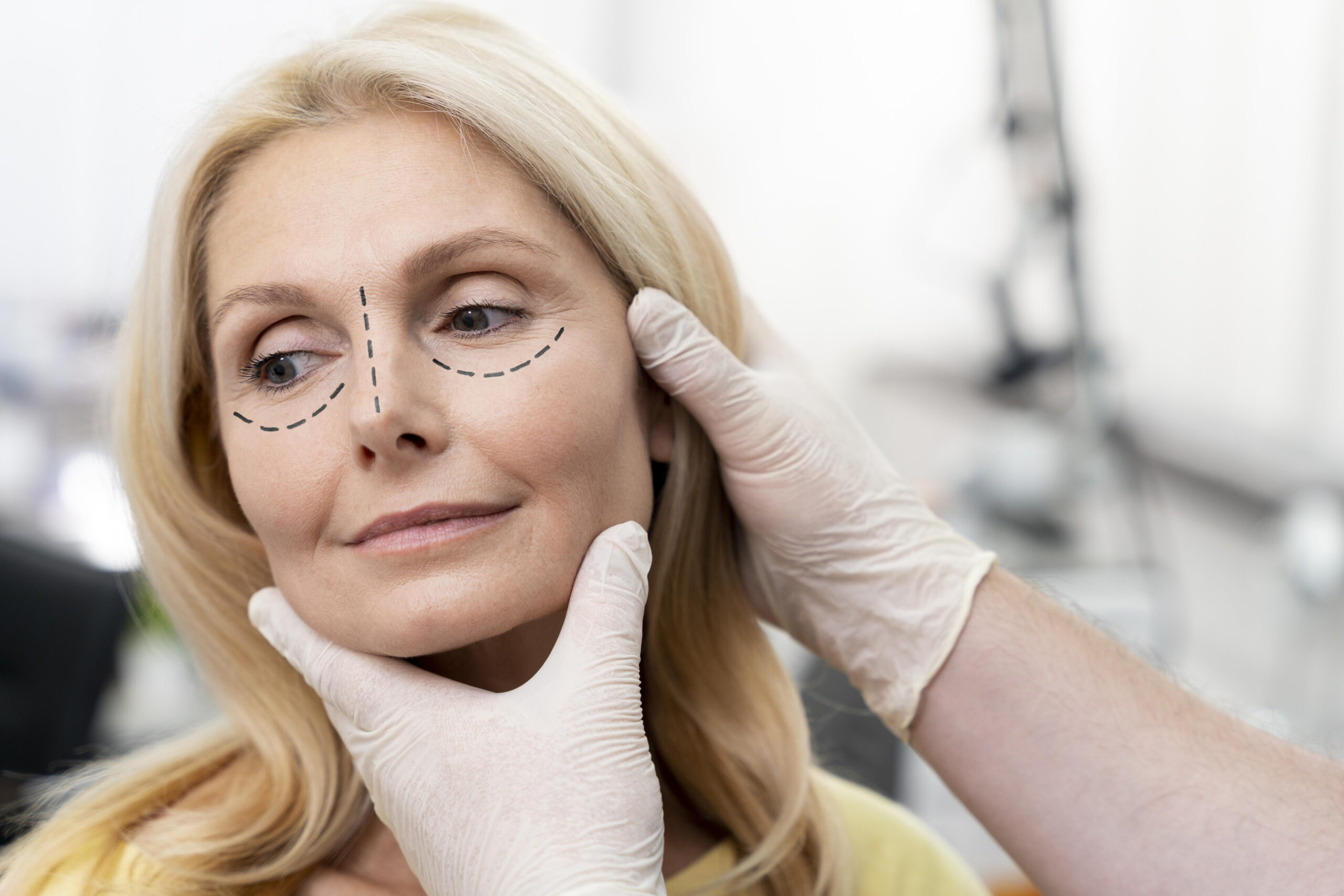Eyelid Surgery:
Blepharoplasty
Blepharoplasty, commonly known as eyelid surgery, is a cosmetic surgical procedure that is performed to improve the appearance of the eyelids. It can be done on the upper eyelids, lower eyelids, or both. The primary goals of blepharoplasty are to remove excess skin, fat, and muscle from the eyelids, as well as to tighten and rejuvenate the area around the eyes.

- How Blepharoplasty is performed in Turkey?
- What are the types of Blepharoplasty in Turkey?
- Who are suitable for Blepharoplasty in Turkey?
- Is it safe to have Blepharoplasty in Turkey?
- What are the risks or side effects of Blepharoplasty in Turkey?
- How long does it take to recover from Blepharoplasty in Turkey?
- What is the ideal age for Blepharoplasty in Turkey?
- What to expect after Blepharoplasty in Turkey?
- How much does it cost to have Blepharoplasty in Turkey?
- Why choose Elan to have Blepharoplasty in Turkey?
- Quick facts of Blepharoplasty in Turkey
How Blepharoplasty in Turkey is performed in Turkey?
The surgical approach varies based on the specific needs of the procedure, but typically, the surgeon will:
- Incise the skin fold across the eyelid to address upper lid sagging.
- Create an incision either just below the eyelashes or inside the lower lid (known as a transconjunctival incision) to address issues with the lower eyelid.
- Remove excess skin and reposition or eliminate excess fat as necessary.
- Tighten underlying tissues, including muscles, using sutures if required.
- Strive to conceal all incisions within natural skin folds and creases.
- Close the incisions using stitches, surgical tape, or tissue glue.

What are the types of Blepharoplasty in Turkey?
Eyelid surgery encompasses various approaches tailored to individual needs. Working with an oculoplastic surgeon will provide you with more accurate, aesthetic and permanent results in terms of eye health and functionality.
Who are suitable for Blepharoplasty in Turkey?
Good candidates for blepharoplasty include:
- Nonsmokers
- Healthy individuals with no medical conditions that can impair healing
- Individuals with a positive outlook and realistic goals
- Individuals without serious eye conditions
Is it safe to have Blepharoplasty in Turkey?
Blepahroplasty is a proven safe procedure that has been commonly implemented for many years. However, as with any surgery, it carries certain risks. The important thing to consider here is a healthcare team that will guide you in line with your wishes.
The field of plastic surgery is very broad. Not all doctors may have equal experience and skills in all areas. Therefore, when choosing your doctor, you should question his/her expertise and experience in ‘oculoplasty’ (ophthalmic plastic surgery, is surgery with relation to the eye and its surrounding structures)
What are the risks or side effects of Blepharoplasty in Turkey?
Possible temporary Side Effects:
- Swelling & Bruising
- Pain & Discomfort
- Scarring
Possible Risks:
- Risks associated with anesthesia
- Infection during healing
- Poor wound healing or scarring
- Eyelids not closing completely
- Temporary blurred or double vision
- Eyes that look slightly asymmetrical
.
How long does it take to recover from Blepharoplasty in Turkey?
The initial phase of recovery following eyelid surgery typically involves some discomfort, bruising, and swelling, which usually reach their peak around 3-4 days post-op. To manage any pain or discomfort, your surgeon will provide guidance on medication and ice pack applications to reduce swelling.
As you heal, you can gradually return to your daily routine, with most people able to go back to work within a few days if they feel up to it. However, it's generally recommended to take 5-7 days off to allow for proper healing. During the first two weeks, it's essential to avoid strenuous activities and heavy lifting.
Once the second week has passed, you can expect a significant reduction in swelling and bruising around your eyes. This marks the emergence of your eyelid surgery results, with your eyes appearing more open and refreshed. You can start using makeup to conceal any remaining bruising or discoloration from the incisions and gradually reintroduce light to moderate exercise.
By the fourth week, you should be enjoying the full benefits of your eyelid surgery, with a more youthful appearance. You can resume your regular skincare routine, including facial cleansing, and can also resume full exercise routines without restrictions.
What is the ideal age for Blepharoplasty in Turkey?
While some people may associate eyelid lifts with middle age, the truth is that anyone can benefit from the procedure, regardless of age. In fact, younger individuals who are self-conscious about their eyelids may find that surgery can be a highly effective solution.
Rather than waiting for the signs of aging to become more pronounced, many people choose to take a proactive approach and address drooping eyelids early on. With a minimally invasive procedure and local anesthesia, the recovery process is often surprisingly smooth. So, if you're concerned about your eyelids in your 30s, don't assume you have to wait decades to take action – consider exploring your options today.
.
What to expect after Blepharoplasty in Turkey?
The blepharoplasty recovery process typically spans around 2-4 weeks, with significant swelling expected in the eye area during this time. The region around the eyes is particularly sensitive, and the swelling will gradually subside within the first few weeks.
While initial results may not be fully visible for several months, it's essential to be patient and allow the healing process to unfold. The average complete recovery takes around 6 months, at which point all swelling will have subsided, and scars will have fully healed.
During the initial weeks after surgery, patients can expect their eyes to feel tight and swollen. This is a normal part of the healing process, and the sensation will gradually diminish as the body continues to heal.
As the swelling subsides, the tight feeling around the eyes will also start to dissipate. In the immediate post-operative period, eyelids may stick together, but gentle use of a warm compress on a cotton swab can help separate them while preserving the surgery's results.
To promote optimal healing, it's crucial to follow post-operative instructions carefully. This includes keeping your head elevated at all times to reduce pressure on the face and minimize initial swelling. Cold compresses can also help alleviate discomfort, swelling, and bruising. Additionally, lubricating the area around your eyes several times a day can prevent dryness and speed up the recovery process.
How much does it cost to have Blepharoplasty in Turkey?
Blepharoplasty, commonly known as eyelid surgery, is a popular cosmetic procedure in Turkey due to its affordability and high-quality medical services. The cost varies based on factors such as the clinic's reputation, the surgeon's expertise, the complexity of the procedure, and whether both upper and lower eyelids are treated.
Upper Eyelid Surgery: €1,100 – €2,400.
Lower Eyelid Surgery: €1,100 – €2,400.
Combined Upper and Lower Eyelid Surgery: €2,200 – €4,800.
| Country | Average Cost (USD) | Remarks |
|---|---|---|
 Turkey Turkey |
$1,100 - $5,000 | Affordable with experienced surgeons |
 USA USA |
$3,000 - $8,000 | Higher cost, advanced facilities |
 UK UK |
$3,500 - $7,000 | High quality, expensive |
 Germany Germany |
$2,500 - $6,000 | Moderate cost, advanced technology |
Why you should choose Elan Tour On Time for Blepharoplasty?
At Elan, we understand the importance of providing exceptional care and support to our clients throughout their medical travel journey. When you choose Elan for Facelift, you can expect,
- Access to renowned and experienced surgeons who specialize in Facial Plastic Surgeries.
- State-of-the-art medical facilities equipped with advanced technology.
- Personalized assistance with travel arrangements, accommodation, and post-operative care.
- Affordable and transparent pricing options.
- A dedicated team committed to ensuring your comfort, safety, and satisfaction.
Quick facts of Blepharoplasty in Turkey
- Procedure: Incisions are made to upper, lower or both of the eyelids with different techniques to remove excess skin and fat leading rejevunated look.
- Duration: 1.5 to 3 hours
- Stay: 7 nights Hotel Accomodation (due to stitch removal on the 7 th day post op)
- Anesthesia: Local or General Anesthesia depending on the patients need
- Recovery: After 7-10 days can go back to work
- Clothes to Wear: Comfortable clothes (sweatshirts, button-down or zipped shirt etc.)
- Side Effects: Bruising, swelling, tightness in the eye, blurry vision
- Exercise: After 3-4 weeks
- Scars: No
- Pain: Mild
- Results: Swelling will ease after 7 to 15 days and final results reveal between 3 to 6 months
- Combined Procedures: Rhinoplasty , Eyebrowlift , Breast Augmentation, Breast Reduction , Breast Lift , Eyebrowlift , Gastric Baloon



